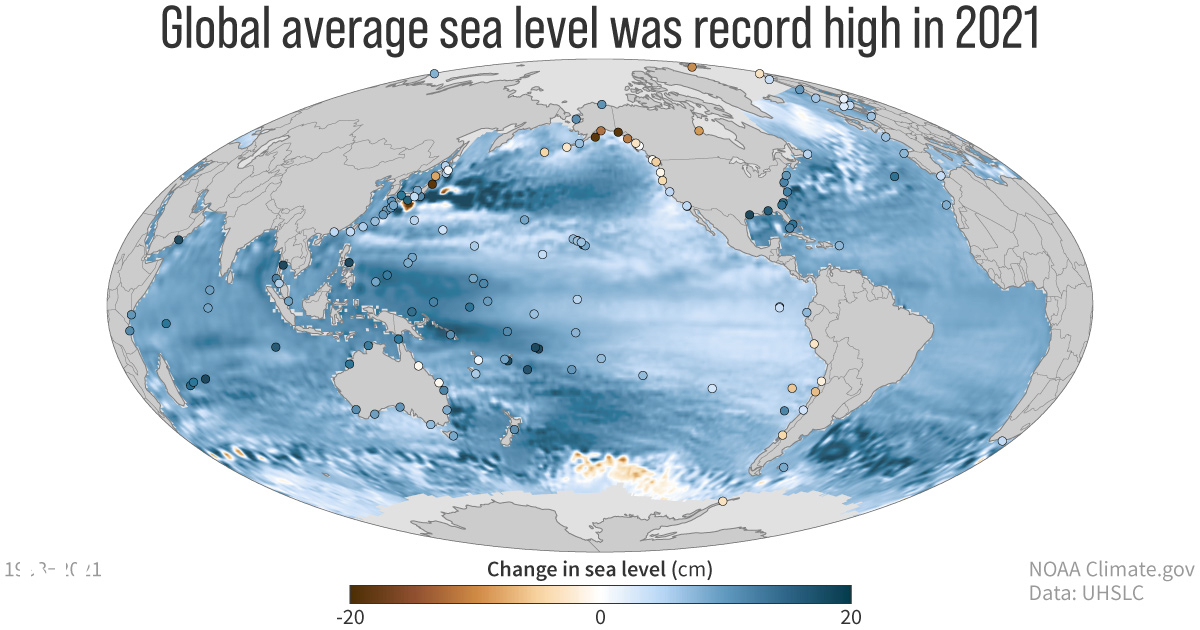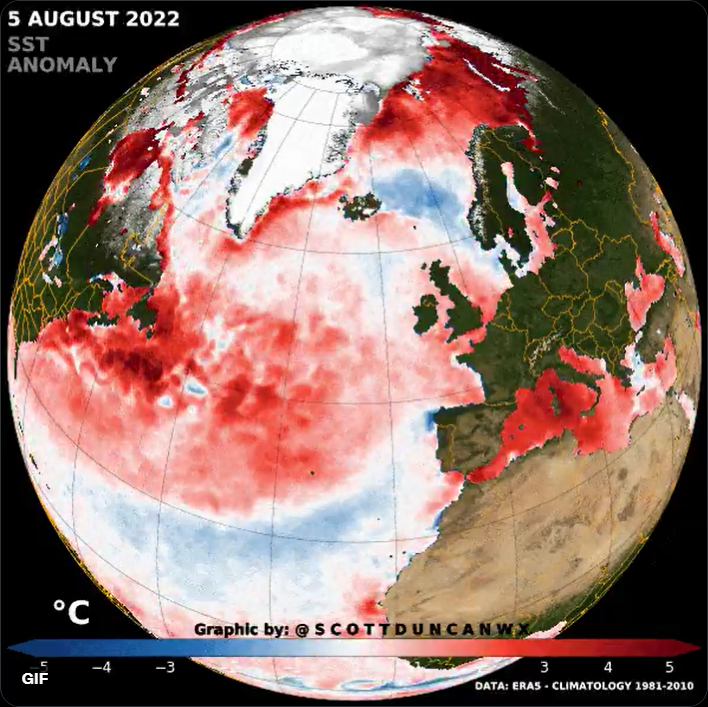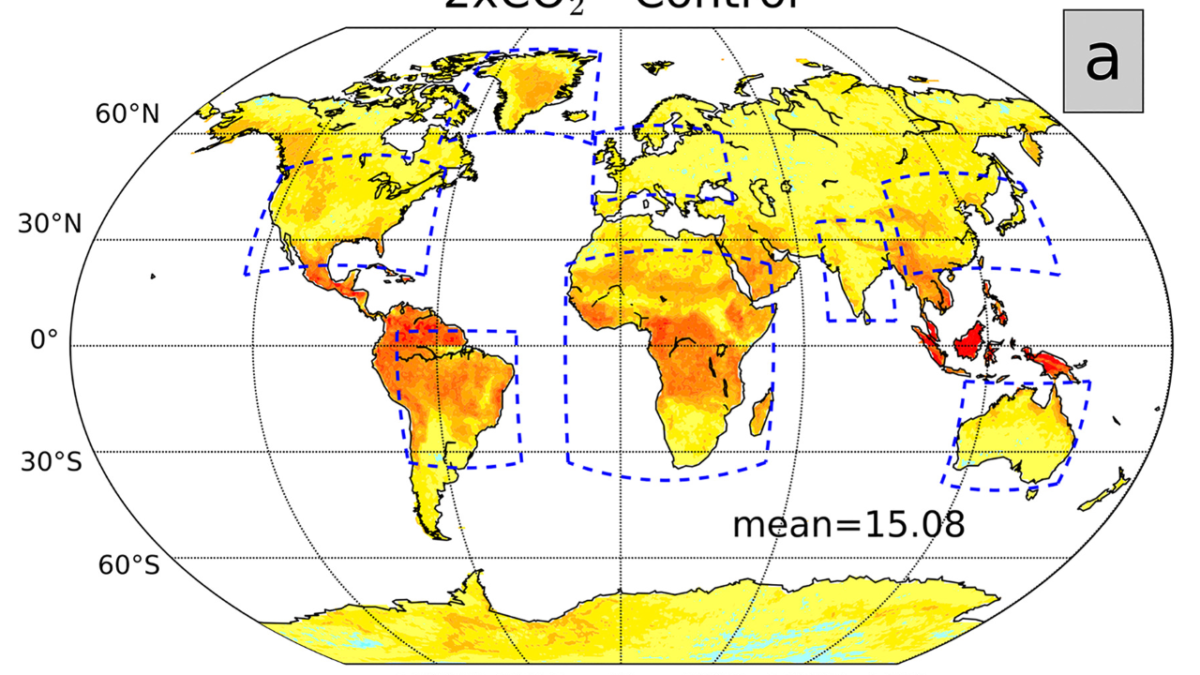An intense marine heat wave is setting ocean temperature records in the North Atlantic – “Every marine heat wave is going to be warmer than the last because of rises in greenhouse gases”
By Denise Chow
7 September 2022
(NBC News) – It’s not just land seeing record heat waves.
Ocean waters in the Northern Hemisphere have been unusually warm in recent weeks, with parts of the North Atlantic and northern Pacific undergoing particularly intense marine heat waves.
Sea surface temperatures in these regions hit record levels this summer, said Dillon Amaya, a research scientist at the National Oceanic and Atmospheric Administration’s Physical Sciences Laboratory in Boulder, Colorado. Parts of the Pacific and North Atlantic have been anywhere from 2 degrees Celsius (3.6 degrees Fahrenheit) to 5 degrees C (9 degrees F) warmer than average at times, conditions that have not been observed since record keeping began roughly six decades ago.
“It’s been very extreme — some of the hottest temperatures we’ve seen on record — and they’ve hung around for several months,” Amaya said.
Oceans naturally absorb and store heat, making these reservoirs good indicators of how much the planet is warming. Studies have found that oceans have absorbed more than 90% of the heat trapped on Earth from greenhouse gas emissions since 1970.
As climate change causes the pace of ocean warming to accelerate, scientists are concerned about the potential consequences for marine ecosystems, sea-level rise, and extreme weather.

NOAA’s annual State of the Climate report, released on 31 August 2022, found that ocean heat, as measured from the surface to a depth of more than 6,000 feet, was the highest on record in 2021.
Increasing baseline ocean temperatures is worrisome, Amaya said, because it makes marine heat waves more likely to occur and persist for long periods of time.
“Every marine heat wave is going to be warmer than the last because of rises in greenhouse gases,” he said.
Researchers pay close attention to these temperatures because warmer oceans can intensify storms and increase the risks of extreme weather.
There’s certainly something going on right now. This is saying to me that there is something persistent in the climate system that is causing these marine heat waves to stick around for a very long time.
Dillon Amaya, research scientist at the NOAA Physical Sciences Laboratory in Boulder, Colorado
And globally, melting ice from warmer oceans can speed the rise in sea levels, posing major threats to coastal communities and low-lying infrastructure. NOAA’s State of the Climate report found that global average sea levels in 2021 rose to new record highs for the 10th consecutive year.
But hotter-than-usual waters also have an effect on the chemistry of the world’s oceans, with carbon dioxide absorbed from the atmosphere making ocean water more acidic. This acidification, coupled with persistent heat in certain bodies of water, can have a big impact on marine life, said Kathy Mills, a research scientist at the Gulf of Maine Research Institute, a nonprofit organization.
Marine heat waves can, for instance, alter the migration patterns of certain sea creatures, exert new pressure on the region’s fish and invertebrates, or even cause invasive species to take hold, she said. Part of her research involves studying the impact of warming oceans on marine ecosystems, and the subsequent implications for local economies.
Mills and her colleagues have found that certain species, such as northern shrimp and cod, have struggled with the warmer conditions, while the American lobster has fared better with the changing temperatures.
“We’re trying to understand how this will affect the biology of organisms, the population-level effects for species, and then what these changes will mean for fisheries in the region,” Mills said.
NOAA’s forecasts indicate that the current marine heat waves in the northern Pacific and North Atlantic oceans could linger for several more months. Amaya said it’s a worrying sign of what’s to come if global warming continues unabated.
“There’s certainly something going on right now,” he said. “This is saying to me that there is something persistent in the climate system that is causing these marine heat waves to stick around for a very long time.”
An intense marine heat wave is setting ocean temperature records in the North Atlantic



